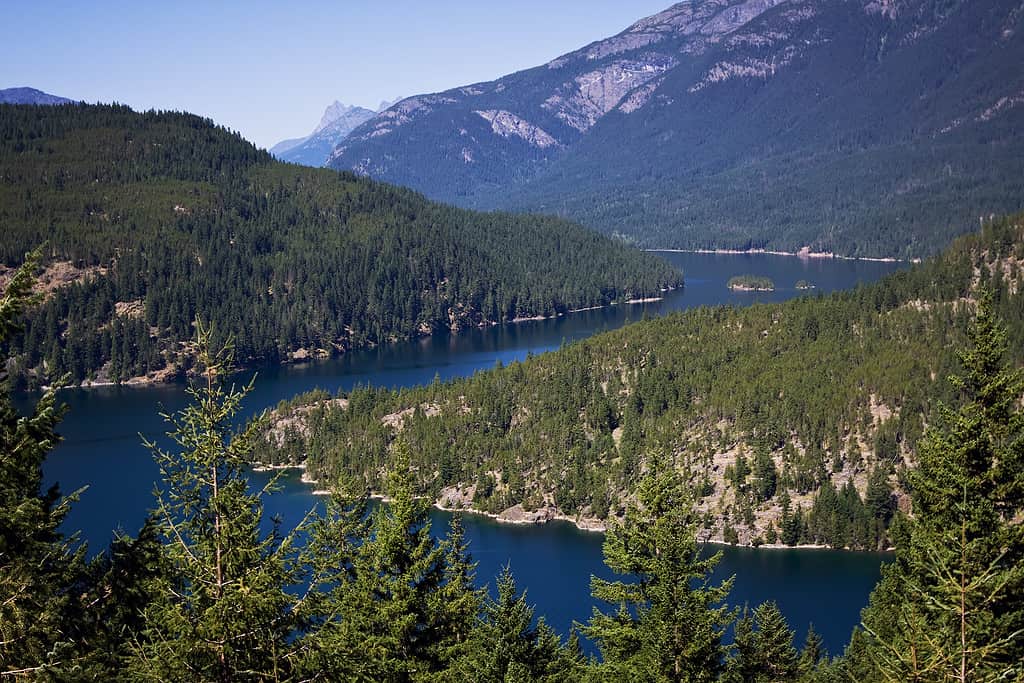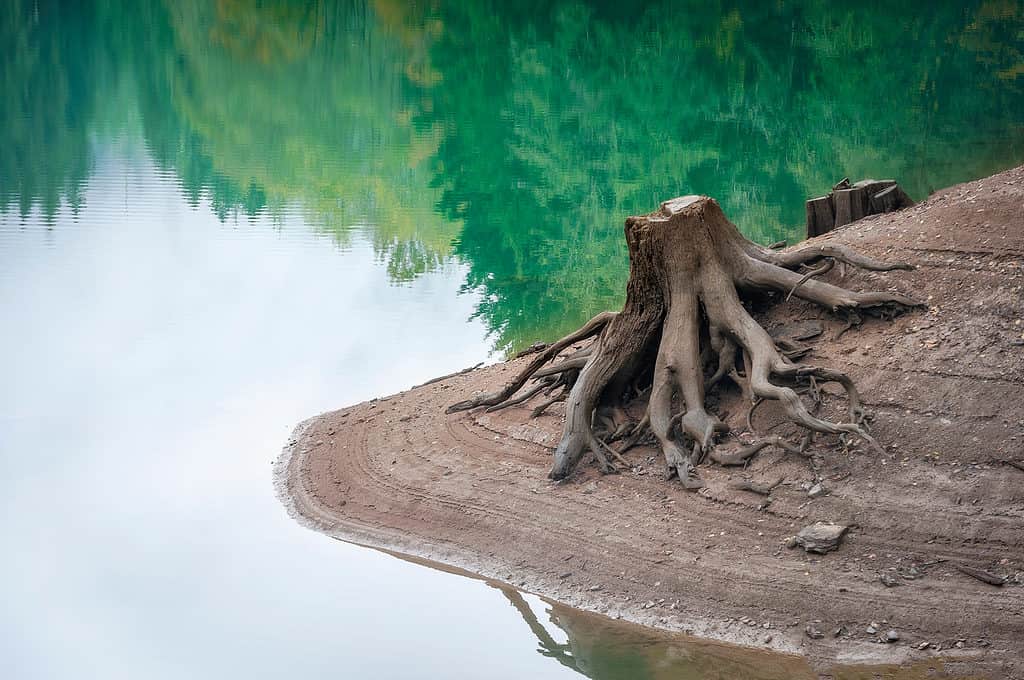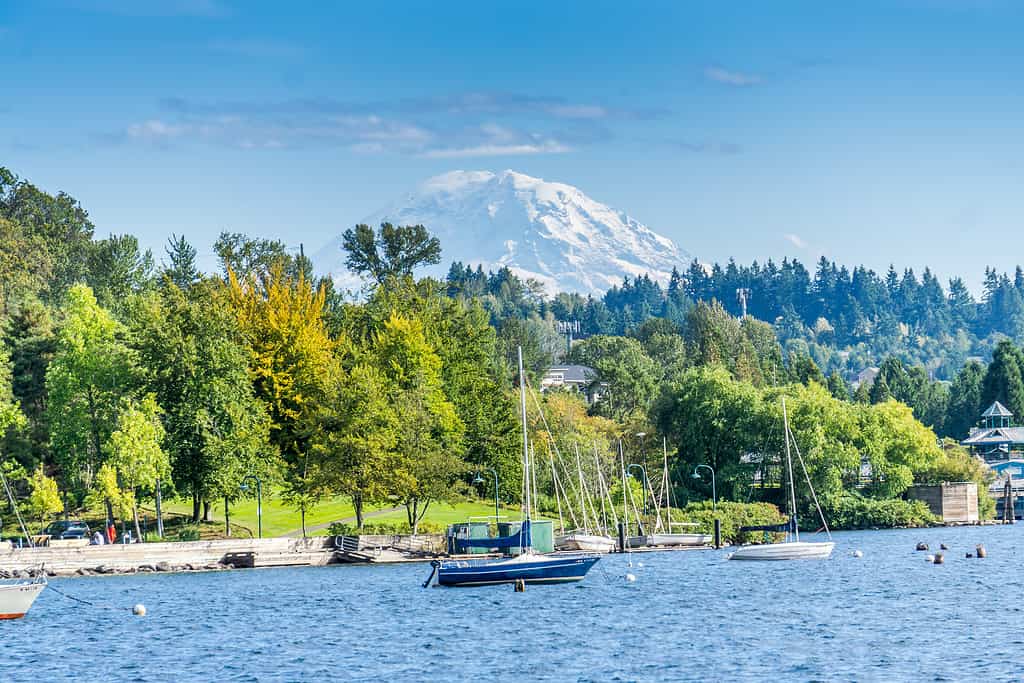Washington lakes are truly a sight to behold. They span the entire state, and are often crystal clear and gorgeous! Although they are some of the most beautiful natural features in the world, lakes can pose an extreme danger to those who wish to swim. Thus, planning your lake trip with safety in mind is an incredibly important thing to do. For instance, scoping out what the lake is like and what gear you may need can ensure that you have a fun and safe trip!
Today, we will answer the main question: How dangerous are Washington lakes? Furthermore, we will also discuss some of the most dangerous lakes in Washington, why they can be dangerous, and how you can be as safe as possible when visiting a Washington lake.
Are Washington Lakes Dangerous?
Generally speaking, Washington lakes can pose a lot of dangers to hikers and swimmers, but they are no more or less dangerous on average than most other lakes in the country. Compared to other states, Washington has a relatively standard drowning rate, falling in the middle of most datasets.
Other states such as Alaska have an extremely high age-controlled drowning rate of four deaths per 100,000 visitors. Likewise, others have incredibly small rates of one or fewer drowning incidents per 100,000 visitors. Compared to these, Washington has around two per 100,000 visitors, which is right in the middle!
With that said, Washington’s lakes still pose some danger to swimmers, especially those who are younger or less experienced in swimming. Let’s take a look at some of the main reasons why Washington lakes can be dangerous.
Rugged Terrain

Washington is known for its rocky and uneven terrain. These conditions can cause people to trip and fall, which is dangerous near deep lakes!
©© Steven Pavlov / http://lovingwa.blogspot.com/ CC BY-SA 3.0 – Original / License
One of the most ironically dependable things in Washington is its wild and diverse terrain and weather. Depending on where you go in the state, lakes can be everything from serene and calm, to rocky and treacherous. While the first scenario is enjoyable, the rocky and treacherous lakes can become dangerous fast!
For instance, many of Washington’s beaches are lined with jagged rocks and boulders or even joined up to mountains and steep hills. These intense features can make swimming or walking near the lakes dangerous. In tandem with Washington’s irregular terrain, weather events such as rain can make the ground slippery and unstable, which adds another level of danger to the lakes.
Extreme Temperatures
Another deceivingly dangerous feature of Washington lakes is their extreme temperatures. To be more specific, they are known for being incredibly cold. Unfortunately, cold temperatures can pose a high risk of hypothermia. Additionally, cold water generally can impact and reduce the ability of people to swim, even if they are experienced.
On top of this, lake temperatures also don’t heat up much, even during the most scorching summer days. Thus, they can look deceivingly inviting, even if they are frigid underneath the surface. This is because lakes heat up primarily from solar energy. Heat from the sun can penetrate only the top layers of the water. Thus, deep lakes rarely heat up below the first few feet. Washington lakes can be incredibly deep, which means most of them are as cold as ice, even in the summer!
Wildlife
In addition to gorgeous terrain, Washington also boasts a variety of native species that can inspire both awe and fear. For the most part, these species are unique and peaceful, such as songbirds and fish. With that in mind, there are also a handful of dangerous animals in Washington that can pose a danger to people near lakes.
For instance, many lakes in Washington state are known for having abundant snake populations. Most aren’t venomous, however, each can pose a risk of biting. Regardless of their toxicity, a snake bite is dangerous, especially if you are trying to swim. There are also a few specific species that are known for their venom, which can pose even bigger risks!
Bears are also dangerous predators that are known for staying near lakes. For the most part, they are interested in foraging for food. If they are startled or feel threatened though, they are not afraid to attack people.
Pollution
For the most part, pollution isn’t a huge issue for all Washington lakes. A lot of lakes are located in remote locations that don’t see a lot of human contact. Pollution can become a larger issue when lakes are close to cities, as there is an increase in littering and other similar activities.
Pollution isn’t restricted to just littering, as many lakes experience runoff, sewage inputs, and industrial waste leakage. These can cause a variety of issues, as they all throw off the natural balance of lake nutrients and chemicals.
Eutrophication is usually the biggest issue associated with pollution. It can be defined as a state of elevated nutrient conditions, which can cause algal blooms and the release of harmful biochemicals. These blooms can choke out lakes and cause more chemical imbalances.
Additionally, the release of harmful biochemicals can also be dangerous for humans who come in contact with the water. Lastly, the introduction of litter and large debris impacts bigger animals such as fish and invertebrates, which also play a role in balancing the lake’s micro-ecosystem.
Underwater Debris

Nearby trees can often break and fall into lakes. They can snag on swimmer’s clothing and cause drowning.
©Edmund Lowe Photography/Shutterstock.com
Underwater debris is a very specific but important category to understand about the danger of some Washington lakes. It is an extremely common feature in Washington lakes, as there are a lot of trees and organic material that can fall into the water.
For instance, many lakes are riddled with loose tree limbs, large rocks, and plants that can easily snag on clothing while you are swimming. These features can be intimidating for swimmers, especially if they are less experienced, and can easily cause drowning if they interfere with a swimmer’s ability to move. Thus, if you are choosing a lake to visit in Washington, it may be best to find one with less debris and clear water!
Most Dangerous Lakes in Washington
Now that you know some basic dangerous features in lakes, we can take a look at some of the most dangerous lakes in Washington. This short list of two lakes is by no means comprehensive, but it does illustrate some specific examples of lakes that have dangerous features in the area.
Lake Washington

Lake Washington is closest to some of the most populated cities in the state!
©Danita Delimont/Shutterstock.com
One of the most dangerous lakes in Washington is actually called Lake Washington. It is adjacent to large cities such as Seattle, Bothell, and Renton. Despite its beauty, it was declared the most polluted lake in Washington. As mentioned previously, pollution can be an extremely dangerous feature of lakes, as it can throw off natural lake balance, cause algal blooms, and increase the concentration of toxic chemicals.
Specifically, Lake Washington is known for extremely severe algal blooms, which are associated with eutrophication and the creation of harmful biochemicals.
Crescent Lake
Moving on, Crescent Lake is another popular lake in Washington that has been historically dangerous. It is known for having some unique terrain and extremely cold waters. This poses a risk to swimmers who are unaccustomed to swimming in uneven terrain under stressful conditions. Unfortunately, due to these features, there are many recorded fatalities in Crescent Lake.
How to Stay Safe in Washington Lakes

Regardless of their potential dangers, lakes in Washington are some of the most beautiful in the country!
©gmc3101/iStock via Getty Images
To begin, it is important to do a little research before you actually go to visit a lake in Washington (or anywhere really). It can be helpful to search what type of terrain exists, if there are lifeguards/safety workers stationed nearby, or even what the typical weather is like in the area.
Next, you should make a list and pack everything that you would need for a lake trip. Some good items to include are:
- Towels
- Hiking shoes
- Water shows
- Fresh clothes to warm up in
- Food and water
- Bear mace/protective equipment
You may also want to plan to go in a group so that you can be as safe as possible. One last thought is that you should be aware and plan for the extreme temperatures in Washington lakes. It is recommended that you research and bring supplies according to the temperature of the lake you are visiting, which is likely cold.
When you first get in the water, move slowly and let your body acclimate to the temperature. Try to stay near the shore at first because the water there is usually warmer. Lastly, be careful if you try to swim out further, as water can become cold fast!
The photo featured at the top of this post is © Galyna Andrushko/Shutterstock.com
Thank you for reading! Have some feedback for us? Contact the AZ Animals editorial team.







